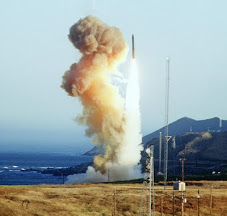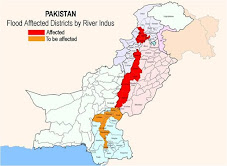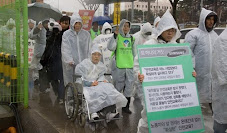Ten Years of the Visiting Forces Agreement: An Assessment
by
Roland G. Simbulan
Centennial Professor, University of the Philippines &
Senior Fellow, Center for People’s Empowerment in Governance (CENPEG)
The presence of heavily armed U.S. soldiers even in the remote areas of the Philippine countryside is now becoming a normal part of the local scenery. As we mark the ten years (1999-2009) of the Visiting Forces Agreement (VFA), we see that it has made our countryside a free-fire zone for so-called joint military exercises using live ammunition and artillery that have killed, injured or maimed our people and children. These foreign troops enter our territory without passports or visas, without clearances from our customs or immigration authorities, without quarantine clearances from our health authorities, with neither licenses nor registration for driving their vehicles in our country. They have gotten away with murder, attempted murder, rape, harassment of our women, maltreatment of our countrymen, and destruction of our environment. A document called the “Visiting Forces Agreement” has given them the right to do so.
More than 40,000 U.S. troops have entered our territory in more than 25 provinces this way since the VFA was put in place in 1999. They came in more than 78 U.S. naval vessels and fleets which include nuclear-armed aircraft carriers, cruise ships, submarines, in clear violation of the Philippine constitutional prohibition on the entry of nuclear weapons in any part of Philippine territory.
The VFA is the most anomalous aspect of our foreign relations today, 17 years after the historic dismantling of the U.S. military bases in 1992. It is a shameless document that is one-sided because it is not reciprocal. It denigrates the Philippine constitutional provision about “equal protection of the laws” by the very fact that it grants special rights and privileges to armed foreign troops on Philippine territory. The VFA has been an indignity to our people, a travesty to our people’s rights and rule of law. This is why Filipinos from all walks of life all over the country continue to protest this so-called treaty as long as it is in place. It reminds us that we are still not really sovereign in our own territory as a nation.
The VFA is thus and indeed a bad example for other proposed or pending military agreements with other countries such as the Philippine-Australian Status of Visiting Forces Agreement still pending in the Senate, or similar draft agreements with Singapore and New Zealand. These are ostensibly using the VFA with the United States as a model.
Is the VFA legal and constitutional?
Clearly, the 2000 and 2009 Supreme Court decisions on the VFA only allows for joint military exercises like the Balikatan, and small unit joint training exercises. It does not allow basing rights or facilities to be constructed for transient U.S. forces visiting the Philippines. It also does not allow U.S. forces to be involved in counterinsurgency operations in the country.
Basing rights or privileges
But since 2003, U.S. congressional budgetary documents have referred to the installation of “forward or advance operating bases” being set up in the Philippines. These have meticulously been exposed by Focus on the Global South researcher Herbert Docena in several articles (Docena, 2006). The facilities for the U.S. Joint Special Operations Task Force-Philippines (formerly called the Operation Enduring Freedom-Philippines), now deployed all-year round in the country, have been beefed up with the U.S. Department of Defense contracting the American defense contractor Global Contingency Services LLC with a US$14.4-million (or P650 million pesos) contract for “base development” in Mindanao. These facilities which have been constructed are described by no less than official U.S. documents and in their Pentagon lexicon as “forward operating bases” or “advance operating base,” especially those that have been set up in various parts of Mindanao inside Philippine Army camps. In reality, these are permanent operating, support, intelligence and training bases set up in direct support for Philippine counterinsurgency operations. Are these really allowed by the provisions of the VFA and by the Philippine Supreme Court?
Role in counter-insurgency activities
The Philippines, under the cover of Balikatan exercises, is being used as a laboratory for the latest U.S. counterinsurgency tactics and strategies in the Philippines, which are later to be used in other U.S. military interventions in other countries. This includes the “security-development approach” in counter-insurgency. The traditional role of the U.S. Army in overseas operations include “small unit training of local forces, civic action initiatives, psychological warfare”. But there are “non-traditional” operations which are implemented in conjunction with agencies responsible for development assistance like the USAID and other conduits like the U.S. Institute for Peace, the National Endowment for Democracy, etc.
General T. Galvin of the U.S. Army testified in U.S. Senate congressional hearings that U.S. Special Operations Forces are also used in “direct action”, including “small unit commando activities,” where “speed and surprise…dictate, otherwise they are for security assistance, combat intelligence and communications.” (Galvin, 1987) Or under a special Executive Order 12333 issued by the President of the United States since the 1980s, they can engage in covert surgical “special activities” beyond the training of local government forces as Mobile Training Teams (MTT).
U.S. military presence in the Philippines today relies heavily on covert U.S. military involvement through U.S. Special Operations Forces (SOFs), service intelligence organizations, the Central Intelligence Agency (CIA) and other covert U.S. intelligence agencies like the National Security Agency (NSA) and the Federal Bureau of Investigation (FBI) playing a central role. Other agencies include the United States Agency for International Development (USAID) and Peace Corps, which specialize in the “hearts-and-minds approach” using so-called humanitarian or non-lethal aid. Covert action includes unconventional warfare, intelligence operations and psychological operations (psy-ops) in target areas such as remote communities suspected of being “controlled or influenced by insurgents”. Their activities provide the fundamental elements in supporting local counterinsurgency operations.
Under the Visiting Forces Agreement, “U.S. civilian personnel directed by the U.S. Department of Defense” are also given special rights and privileges like their uniformed U.S. military counterparts. Their range of activities include economic, civic, military, diplomatic and political action, all aimed at achieving the political/psychological (psy-ops) objective to undercut a movement’s support base and destroy its credibility and influence to provide support for U.S. objectives. Humanitarian or civic action missions, in the form of medical/dental (MEDCAP) teams purportedly to meet human needs, are meant to penetrate local political infrastructures and achieve the objectives of psychological operations. This is what U.S. manuals on counterinsurgency say about these “non-lethal tools” for counterinsurgency and about the purposes of these activities (US Army, 1975).
This is also why U.S. intelligence operatives and counterinsurgency specialists under the coverage of the VFA now are seen freely roaming the General Headquarters of the Armed Forces of the Philippines and other AFP camps. They provide critical battlefield intelligence and communications/logistical support for large and small-unit local counterinsurgency operations.
Let us review the real role of the “humanitarian missions” of the U.S. Department of Defense. During the Philippine-American War, General Arthur McArthur (General Douglas McArthur’s father who served in the US Army during its “pacification” of the Philippines) made the following frank statement before the 57th Congress of the United States:
“One of my purposes was to improve roads for strategic purposes entirely. I got $1 million gold for the purpose. Whatever incidental advantage arose to the community was, of course, in consequence of the military necessity. My view was to make passable roads during all seasons, so that by assembling troops at central points and connecting the outpost by wire, we could rapidly move from the rendezvous to the extremities, and thereby avoid the necessity of scattering into so many posts.”
United States Marines and Special Operations Forces are actually doing battlefield intelligence and psy-ops as they conduct infrastructure, civic action and “humanitarian missions” with USAID personnel in many parts of the country today, using the VFA as a cover. Meanwhile, the Philippine’s VFA Commission, which was ostensibly created to oversee the implementation of VFA provisions, including monitoring violations, has only become the principal apologist for the onerous agreement, while consistently covering up even the most brazen violations of the agreement by U.S. military forces.
Resistance to VFA
The people of Mindanao, especially in the Autonomous Region of Muslim Mindanao, are waging a continuous campaign to stop U.S. military intervention—both covert and overt—in the internal conflict, which has only complicated the situation in the second largest island of the Philippines. Lately, the people of Bicol region have scored a tactical victory in the struggle against the restoration of U.S. military forces by forcing the rollback of 6,000 U.S. troops and forcing them to send instead a so-called 100-member U.S. military “humanitarian mission” in the Balikatan exercises. BAN Balikatan (Bikol Against Balikatan) and the SUMABA KA (Speak Out!) or Sorsogon United Movement for Peace Against Balikatan have successfully forced the retreat of BK ’09 into a defensive position. A people’s caravan that traveled in all of Bicolandia’s provinces highlighted a strong people’s resistance to the VFA which is being used as a camouflage to U.S. involvement in counterinsurgency and the restoration of de facto basing rights in the country.
The Filipino people will muster the will and determination to flush out foreign troops from our territory, as they mustered the will and power to dismantle U.S. military bases in 1991.
References:
Docena, Herbert (2006). Unconventional Warfare. Focus on the Global South. Also see Docena, Herbert, At the Door of the East (The Philippines in United States Military Strategy).
Galvin, T. General (1987). Testimony before th US Senate Committee on Armed Services. Feb. 23, 1987.
United States Army, (1975). Guide for the Planning of Counterinsurgency. Department of the Army, Wash. DC.







![[URGENT PLEA: In Update] EMERGENCY in GANGJEONG Since AUG. 24, 2011](https://blogger.googleusercontent.com/img/b/R29vZ2xl/AVvXsEiQvpaNf6EePZVucu97_JphYsFS5IgumnSiA4YAmen1PZcim6vMmW7XjZ7J6nLh-Cu36mwBN5n1evrA3ey0vYMpwlAGsgnSFggv6a1w4Qx9BvvqOB0hy0BIcBkL2Exfs3zIxBsBuDGa1kzg/s227/jejusit.jpg)



![[Solidarity from Japan for the Jeju] 253 individuals and 16 groups/organizations](https://blogger.googleusercontent.com/img/b/R29vZ2xl/AVvXsEivji7100kBkr0hzvqYfh4IBBilkZ6XgDIg89jOxS6kTssxsVKC6Wm-fZbKOEsiy3zcO-9gW6GHspD5R_2C9WsGx5S1Z5VPj_OVRF7H6dxdaT0S-2H1eqsDsYvIwOV26VscxTHnKmP5iZmh/s227/jeju_12_10j.jpg)

![[Translation] Korean organizations' statement: Immediately cancel the joint ROK-US drill Nov 26](https://blogger.googleusercontent.com/img/b/R29vZ2xl/AVvXsEgfKDMo-qyEjm5asUtHlREyJY_5Ou-2tyB8SH6aUxiViRbbKR-8W_rirFiGp5DYSoD_KaeNOPMWR0af0ZPUIbJKmR89ImDvADHsGAIqsJVBvJNBEIl5wLd3G_zhPDW3Z2SxsHXadOsXe8st/s227/1.jpg)
![HOT! [Hankyoreh Hani TV] Beneath the Surface: the investigation into the sinking of the Cheonan](https://blogger.googleusercontent.com/img/b/R29vZ2xl/AVvXsEh80rL3Qv9GnfHSqbYMfivdqX5gZN-1O_VQj3A_Gk3yjWdybHwJCsprA3l6cEQB0cYCP2oNeaLo2ohLGIy0Uqqkv_fRkBevGJ2f-qkKD5eP1ZGsKeQ-r-jHUUb79WvucIN7hpEtXza4xXCL/s227/HaniTV+Cheonan.gif)



![[Translation]Statement against illegal inspection and unjust lay-off by the Kunsan USAFK!(Nov_2010)](https://blogger.googleusercontent.com/img/b/R29vZ2xl/AVvXsEg3JlQ-lreusCIJo5Yv2e3ZrRwrSMUE7UQxlrDVjmBehl0Pa24QZIAbZ5vUpgnnExbkKL9PdCwxVYSHWJkr_XK0FM4EhU3CMFhqfborVNu_p4v3bEFpNm3ia-aEHnvMMuEBI27aB7_BETuJ/s227/gunsan+protest.gif)
![[Translation] Korean organizations' statement against dispatching special force to the UAE on Nov.](https://blogger.googleusercontent.com/img/b/R29vZ2xl/AVvXsEiU7TNhTDLLwZkKP0Z78JsCZKp6je-QSFll3_ThmLES_y_nPLXEzeakrsZXoNxhN5blopEhy6xGV2tneJrniPdTR-JvOQMmSLr_HhlucxFvbusxk4oKvvMO2laBOHSIkB9OOeOxrQlqCA0O/s227/antiwarpeace.jpg)
![[Translation] Stop, Joining MD!: South Korean activists' statement and writing on Oct. 25, 2010](https://blogger.googleusercontent.com/img/b/R29vZ2xl/AVvXsEggGIHVei8j7LCJPJB5HIrspd942q436daNTquP-pFd45Cl70Ml_1JFiFDHgKu6FcoqNgFVKIFqjeuSPau2k_BwGHhx0cqFFL2-4ybZSTlmua0_AsERBtKYQa7jZk7uNj41LX6rj2vksHbo/s227/StopMD.jpg)
![[In Update] People First, NO G-20 (Nov. 6 to 12, Korea)](https://blogger.googleusercontent.com/img/b/R29vZ2xl/AVvXsEhZl8VTqeL7o2ndliGIE-sZFCikbTgfB9KCc3AtZvDaYijBBEhdfultMEOpyrCaD5gzpH8mqfWjU20KXMbSUl-5KM7yQeHU6z3BWV8tiOy4UKaCudz9VKWoi5x58xdC_gQpJTjkR5u7O9xf/s227/left21_G20.jpg)
![[International Petition] Stop US helipad plan in Okinawa to save great nature](https://blogger.googleusercontent.com/img/b/R29vZ2xl/AVvXsEihgYmdb0N8ViPvTFC_5i-Psbt4eX_LnAUEOtZkUngv_pGvRyWag1r6W60NicLLyTgWq-sPT1hBxLY5SadEIVv5McfZQ5uIhe-W0VoflQNqojsYZjFW6AH-gB1jsmSDGnGuKIFk2UkvNbFG/s227/yanbaru_w.jpg)

![[Global Network] against the first launch of Quasi-Zenith Satellite, Japan, on Sept. 11, 2010](https://blogger.googleusercontent.com/img/b/R29vZ2xl/AVvXsEj2sYpfodDDMIA7qXwuda0DmKapxXFB479fDnn8RKy7QNZqz0VEvWucNd-DleZ37hWNXC-Z8QtaqtM37VuPwac5SgclJ9_khBBSWOedvm19MRXIP1j1kcWrK6EW5IFjQdEEY2h7E6xuyNvC/s227/Qzss-45-0_09.jpg)

![[In update] Some collections on the Koreans’ protests against the sanction & war on Iran](http://4.bp.blogspot.com/_gnM5QlRx-4c/TJMvke6t8zI/AAAAAAAAFO4/tamQ8LUnOOA/S227/No+Sanction+on+Iran.jpg)
![[Three International Petitions] to End the Korean war and peace treaty(or peace resolution)](https://blogger.googleusercontent.com/img/b/R29vZ2xl/AVvXsEhlohLVYtpCg7iMsZhNYY4hBbhTi2dIheHMHWLDph9X2y78cjgZV1LeSfUJeu80elhJm70Q9E059q72lK-spSPvsRG4bPuCDIytltJB9IH3mWt9OG98HqhnTsPakwhvNeoCFUgF1xoxQ2EZ/s227/border.jpg)



![[Collection of Documents] No Base Learning and Solidarity Program_Korea(June 14 to 20, 2010)](https://blogger.googleusercontent.com/img/b/R29vZ2xl/AVvXsEix_HzjToh3nNGHBc-_5gasq-ykcaZ6GInLixILmZVyRJ5xoeHCxWOyYd9fSM7bmnuFsjSrYOGEPnQOwB1Dcyo-sN4Pw0cFPhUtKig_qlVnGL1Wi82ClvPqbEPWYhJiqdNF0DyzLIBETMB9/s227/No-Base-banner.jpg)
![Site Fwd:[John Hines] A U.S. Debate coach’s research trip on the Issues of Korea](https://blogger.googleusercontent.com/img/b/R29vZ2xl/AVvXsEg8yRra0zNhKHN74Auqhd3Nx9tZ7BWCGflRJHGH4CfzBT_yjhZ8Nl9b3OZuLpYWJ2exsjmR0oVl-Qq_cf832p2VdmOZhUi-lCFzCNeDSyVtweX1lWZPC-RlHmDMLtilHwHjNFTenBiM4Fk4/s227/Jeju-Peace-Tour.jpg)


![[News Update] Struggle Against the Jeju Naval Base since Jan. 18, 2010](https://blogger.googleusercontent.com/img/b/R29vZ2xl/AVvXsEhKfSTRC5QKBBSFIq_m7QIqXdlbL4-gF5GJYn9Q-pN__k7sV7uxGDcLY5L8xmU7QuWuUhBT_GhG-URBPO80RT3AfWfDrWJr06h1hFuZC6ZBVKe4U6PS1Cd7Kr6olO8TYQtk13Drox7IS6ea/s226/scrum1.jpg)


![[Urgent] Please spread the Letter!: There was no Explosion! There was no Torpedo! (May 26, 2010)](https://blogger.googleusercontent.com/img/b/R29vZ2xl/AVvXsEhSd2yWZ3xGwnJQXB73z5FgXCqSosAoB9_33-GLYprOmLqjmvgSAQp1BYI7e4slK1FDxHRi9KK4um-OpDaj8QOkXwAScVAgvvq6-ehbDA-hbkr96wT9oHNNmWnBPv8GU4hoZp9X8F9AZBX4/s227/grounded.jpg)
![Text Fwd: [Stephen Gowans]The sinking of the Cheonan: Another Gulf of Tonkin incident](https://blogger.googleusercontent.com/img/b/R29vZ2xl/AVvXsEi_L6hB3RZ1MovTXHe0A8yn_RfgMALGR0kM6poBuGp809xwvHtB_-PGWtS_WpyPWatyd9lB2pPqL2gOLc4dTCEdJ9sMvxJWEdapl-mMLm7WHAsV-jVpgqarVh8XBtdz_0c-Vohdh3HtJahD/s227/lee-myung-bak.jpg)
![[Japan Focus]Politics in Command: The "International" Investigation into the Sinking of the Cheonan](https://blogger.googleusercontent.com/img/b/R29vZ2xl/AVvXsEiHmTo8v-uCJnabRhMdnBAkC9J3s5bb2JsDKiT5leJHwbK8IDJHxfJmqQ_C0Is_bPC6UGMf05CA0exF2y4r2x9RhFUHT0kjsKviaME_MZXKnq775UyYAdb7w2SAzE75XvBfHp1al2q6i3cf/s227/wen_jiabao_and_lee_myungbak.png)
![[Japan Focus] Who Sank the SK Warship Cheonan? A New Stage in the US-Korean War and US-China](https://blogger.googleusercontent.com/img/b/R29vZ2xl/AVvXsEiKSS5ULT5QBaMGYpXXqBMX9jtwLwMLuK469b6Ku72GTJYKUObzTANaPjZqvvpPzYMJgPF53sjhvhK3DVa88ipYlggsJageykXlkxY6s8TW05xcU-_vfhf-pACUoaWuFbT-fsU1qEhm_yIi/s227/buoy_map.gif)
![[Updated on 12/13/10] [Translation Project] Overseas Proofs on the Damages by the Military Bases](https://blogger.googleusercontent.com/img/b/R29vZ2xl/AVvXsEikADE6JovUNspQyZUWVMTLAQg7yQNqXpVUbqZPk8f4uc_1723_xm1Cco6WAmstQXVPnaJAcb1mZA8Ny_3xONT_f5uh8MNLPnUhtqdGgy3HCtC1Vbbz4Q0ZY1Cssu-4cJEVNdrvznbS5UzO/s227/missile.jpg)
![[International Petition] Close the Bases in Okinawa](https://blogger.googleusercontent.com/img/b/R29vZ2xl/AVvXsEhNpQiHklwFbWVlFK7GDFXnBSOOSFEj3Il-We-N3uTDldKiidL2NGZs7X_LtTnatzTo_r8CexRkFe8NhfxYqmgp1knEEslROTfNjI5_mSb57cdbhPkftvanveYBaevAD9xuKDGoIxiTwoSb/s227/2.jpg)

![[In Update]Blog Collection: No Korean Troops in Afghanistan](https://blogger.googleusercontent.com/img/b/R29vZ2xl/AVvXsEjjEmCRXSNAG7_QBxKWbdksmxoWR4nyAovQTTdR1G2AuXh0jxtqNkI9OmYgYWRoLAJShvtBvE840QXuBWSVh3u3zMYqkNAFX6OWy3m5Nur4HM7uNK-pKT1ycyApJp-VLyhIFRRcoisYAh0E/s226/No-Troops-to--Afghanistan.jpg)










